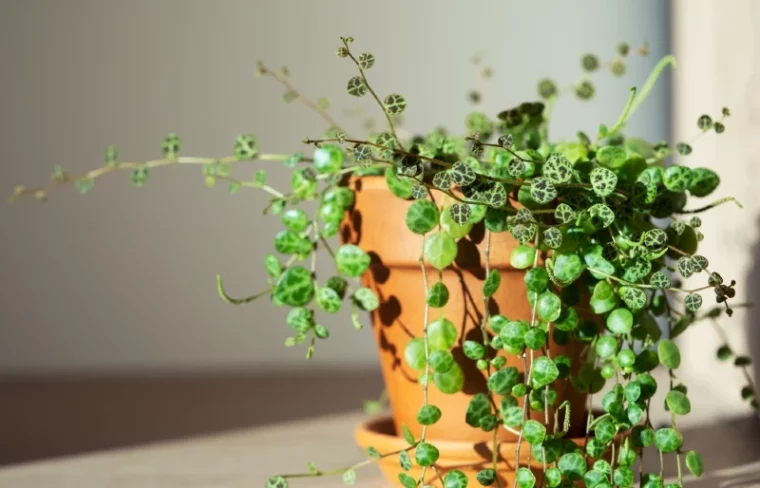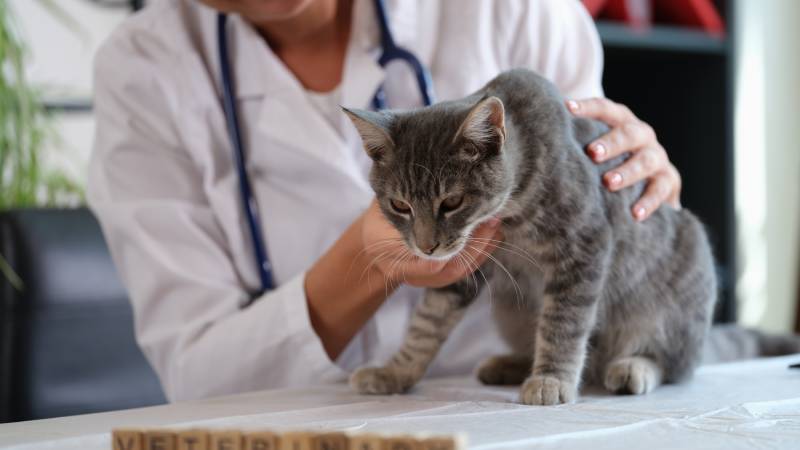
Cats own our homes and hearts. It’s hard to imagine our lives without them, and it’s only normal for us to be concerned for their health. This includes being very careful about the houseplants we bring into the home. Unfortunately, no matter how big of a plant lover you are, there are plants out there that can be toxic for our pets.
With the popularity of succulents being on the rise, many pet and plant lovers are asking, is string of turtles toxic to cats? According to the ASPCA, string of turtles is not toxic to cats. That doesn’t mean you should allow your kitty to eat these plants, however, as they can cause stomach discomfort and upset. Let’s learn more about string of turtles and your cats to help you understand the relationship and precautions you should take.
What Is String of Turtles?
String of turtles, or Peperomia prostrata, is from the Piperaceae family of plants. This plant was first discovered in the 1800s and has been a popular houseplant from the onset. Thriving in their original home in the rainforest regions of Brazil and Ecuador, these small plants prefer humid, hot conditions. This may make some people believe that it cannot grow well in a modern home, but that’s not the case. These tough little plants can thrive if you do your part to provide them with decent conditions and proper care.
The string of turtles plant gets its name from the tiny leaves that feature both the shape and markings of mini turtle shells. They are also called “trailing Peperomia” by some due to the delicate stems that trail downward when growing. The turtle shell-like leaves are densely spaced along these trails. Besides the attractive appearance of this succulent, homeowners also love this plant thanks to the foliage being so good for your well-being. The plant can filter certain contaminants from your home’s environment.

Is String of Turtles Toxic to Cats?
Now that you know more about the string of turtles plant, let’s take a deeper look at the plant’s relationship with your cat. As most cat owners know, there are lots of houseplants that are severely toxic to your cat and other pets in your care. Thankfully, according to the ASPCA (American Society for the Prevention of Cruelty to Animals), string of turtles is not considered toxic to your kitty. This means you, your family, and even your pets can reap the air-cleaning benefits of this plant if you follow certain precautions.
Why Cats Shouldn’t Eat String of Turtles
With string of turtles having certain naturally occurring substances that can be harmful to cats in large amounts, it’s best not to allow your cat to eat it. It may not poison your cat, but it can cause stomach issues and discomfort. This is because of the saponins and calcium oxalate crystals found inside. While a small bit of the plant shouldn’t harm your kitty, overindulging can be a problem. Here are a few signs you should watch for if you have a string of turtles in your home.
Saponins
The saponins in string of turtles are known to cause gastrointestinal issues in cats. If you catch your kitty munching on your string of turtles plant, watch for vomiting, diarrhea, lethargy, abdominal pain, a decrease in appetite, or drooling. These stomach-related signs indicate that your cat needs a trip to the veterinarian.
Calcium Oxalate Crystals
The calcium oxalate crystals can cause lots of physical irritation to cats. Kitties that indulge in string of turtles may show signs of inflammation or irritation to the mouth, throat, and gastrointestinal tract. You may also see signs of difficulty swallowing, swelling of the mouth, and vomiting. If you see these signs, contact your veterinarian.

The 4 Tips for Keeping String of Turtles with Cats in the House
While string of turtles isn’t toxic to cats, that doesn’t mean you should allow your kitty to sit and chew on these plants due to the saponins and calcium oxalate crystals. Remember that both of these substances can be quite dangerous for your kitty if consumed in large amounts. This means you should keep your cat away from your string of turtles plant. Below, we’ll share a few tips for doing this so you can have both your plant and your kitty safely.
1. Use Elevation
One of the easiest and most straightforward ways to keep your cat away from your string of turtles plant is to elevate it. Yes, cats can climb and jump, but that doesn’t mean they can get to all surfaces of your home. You can place your plant on a high shelf, in an area your cat doesn’t visit often, or even hang it from the ceiling. Thanks to the trailing of the foilage, hanging from the ceiling is a beautiful way to display these plants.
2. Use Herbs
Certain aromatic herbs are known for deterring cats. Our feline friends aren’t fond of strong smells like rosemary and thyme. To protect your plants, you can grow these herbs near your string of turtles or crush these herbs into the pot. Another way to utilize these herbs is to bundle them and leave them around your plants.

3. Use Citrus
As we just mentioned, cats aren’t fans of certain smells. One of those is citrus. You can boil lemon or orange zest to make a sprayable deterrent for your plants. You can also leave orange or lemon peels in the pot to keep the kitties at bay.
4. Use Barriers
If need be, you can use barriers to keep your kitty out of your plants, such as mesh fences, wire cages, and even barriers made out of double-sided tape. Obstacles can distract your cat from the plant. The double-sided tape hinders them due to cats hating sticky surfaces. You may also choose to keep your houseplants in “cat-free” rooms where your kitty isn’t allowed.
Final Thoughts
The string of turtles plant is not only beautiful but beneficial to our homes. While it isn’t considered toxic to our cats, that doesn’t mean you should allow your kitty to overindulge in this plant. Instead, keep the plant away from your kitty or offer them something completely safe like catnip or cat grass to keep their curiosity curved. By doing this or following some of the other tips shared in this article, you should be able to safely keep a string of turtles plant in your home with feline friends.
Featured Image Credit: DimaBerlin, Shutterstock







